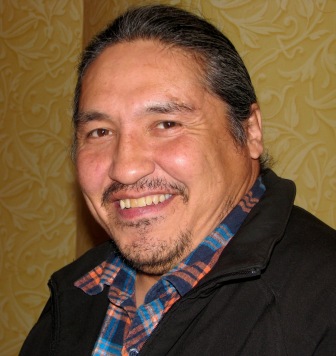By Jeremy Appel
(ANNews) – The chief of Athabasca Chipewyan First Nation is calling for work on Imperial Oil’s Kearl tar sands mine to be halted until an investigation can be conducted into continuous tailing ponds leaks.
Tailing ponds refer to the toxic sludge coming from oil mines, which are contained in a specific area. But when they leak beyond the area, or pond, the impact can be dire for wildlife, fish and humans.
At a March 2 news conference, Athabasca Chipewyan Chief Allan Adam said the First Nation wasn’t made aware of the leaks until a draining pond overflowed in February, spilling 5.2 million litres of wastewater, despite the Alberta Energy Regulator having been informed of leakages in May 2022.
“The news that these leaks have been ongoing for nine months has caused great anxiety among our people,” Adam said.
In the meantime, band members have been harvesting food from the surrounding areas. “Some of these foods have been shared throughout our community. We have been eating them for months unaware of a potential danger,” Adam noted.
As a result, the nation’s leadership is calling on band members to avoid eating any food or water that was harvested after May 2022, but the human damage has likely already been done.
Athabasca Chipewyan leaders met with Imperial Oil and the AER several times in that nine-month span, yet were never informed of the leakages, he added.
“Each meeting was an opportunity where they could have come clean, but they chose to hide the fact from us over and over again,” the chief noted.
Ultimately, Chief Adam says the lack of notification stems from “environmental racism.”
“If this was the city of Edmonton or Calgary that this happened in, they would notify the public right away,” said Adam. “For them, dealing with the Indian problem is to poison us and get rid of us eventually.”
The nation’s regulatory advisor for Dene lands and resource management Callie Davies-Flett noted that Imperial Oil was warned this could happen in a joint federal-provincial review of its 2007 environmental impact assessment, which noted the tailing pond was situated in a region with “very permeable deposits.”
“In other words, it was likely to seep,” Davies-Flett explained.
The project was approved under the condition that Imperial Oil install monitoring and seepage control measures, which took the form of pumps that removed the seepage and dumped it back into the pit.
“This is like bailing out the front of a boat by dumping water back into the boat,” said Davies-Flett.
Contrary to Imperial’s assurances there would be no impact on wildlife, representatives of the nation found three moose tracks just metres north of the site in a Feb. 25 flyover of the impacted lands, she added.
Aliénor Rougeot, Environmental Defence Canada’s climate and emergency program manager, told Alberta Native News that Imperial Oil’s cover up shows oil and gas companies are not to be trusted, whether it’s their commitment to the environment or Indigenous rights.
“None of this was surprising,” Rouegot said. “This is in line with the rest of the behavior you’re seeing from this industry. Prioritization of profits above people, both with regards to the climate crisis and the communities that live right there.”
A 2022 report from Environmental Defence and the Canadian Parks and Wilderness Society notes that tailing ponds occupy more than 300 km2 of territory and counting. The risks of leaking tailing ponds are well-established, Rougeot said.
The AER’s role in facilitating the coverup is especially disturbing, she added. “It doesn’t feel like we have a trusted government source that we can go to when there’s a need for information about the environmental and human health impacts,” said Rougeot.
Jamie Long, Imperial’s vice-president of mining, told The Canadian Press that the company “regret[s]” not having informed the nation of the leakage sooner, promising to take the “necessary steps to improve our communications so this does not happen again in the future.”
The AER told CP that while an investigation is underway, it’s not its responsibility to inform the public about leakages.
“It is the licensee’s responsibility to report fluid releases to affected or potentially affected parties as soon as they become aware of the release,” the regulator said.



Be the first to comment on "Tailing pond leaks concealed from Athabasca Chipewyan First Nation for 9 months"